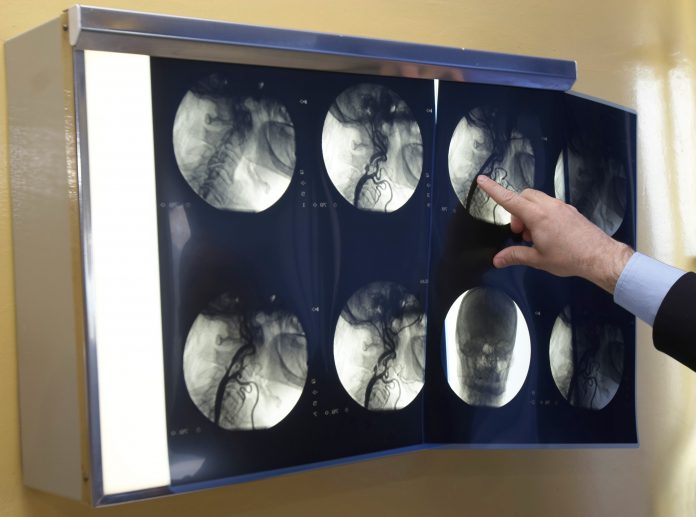Delays in radiology are crippling the already overstretched NHS and prevent clinicians from providing timely diagnoses and treatment to their patients
It’s no secret that there is an enormous shortfall in the radiologist workforce, but the consequences of this are often poorly understood. Radiology is the backbone of healthcare because, without a diagnosis, there is no treatment. If we don’t find innovative solutions that tackle the huge problems facing radiology, there will be far-reaching consequences for the NHS.
A continuing supply and demand mismatch
The biggest problem facing radiology is the supply and demand mismatch. Quite simply, there is a huge demand for scanning but not enough scanners, radiographers (technicians who take the scans) or radiologists (doctors who interpret the scans). The reason for the huge jump in demand is because of an ageing population with chronic illnesses as well as medical advances where treatment requires complex medical imaging. Not being able to address this demand leads to real-world consequences for patients for whom delays in imaging can have catastrophic consequences.
133,000 scans performed each day in the UK
To put this into context, there are approximately 133,000 scans performed each day in the UK, up from 120,000 before 2020. The increase in scans and Covid-19 backlog has also meant that there has been a tenfold increase in patients waiting more than six weeks for a CT or MRI scan.(1)
Delays in radiology are having a knock-on effect
Days, hours, and minutes matter hugely when it comes to diagnosis, and delays prevent early treatment and lead to poorer outcomes. Studies have shown that bottlenecks in imaging leading to delays in diagnosis result in unnecessary patient deaths(2), and the NHS has been repeatedly warned of these dangers in recent years.(3) Radiology clinical directors quoted in the Royal College of Radiologists (RCR) 2020 workforce census report commented that radiology delays mean that “we can no longer provide cancer care and acute care safely”.(4)
Delays to cancer diagnoses can be particularly traumatic for patients, as a case reported in the BMJ of a pancreatic cancer patient who missed out on a life-prolonging treatment due to an 18-month delay in reporting a scan shows.(5)
These are all issues my co-founders and I saw first-hand, first as junior doctors and eventually as Substantive Consultant Radiologists in the NHS. We grew increasingly frustrated that no matter how hard we worked, patients were not getting diagnosed swiftly enough. We decided to solve the problem at scale by creating a platform that paired great people with great tech. As doctors, we’ve always understood that technology on its own is not enough. Community and teamwork are at the heart of healthcare, and that’s what we’re creating at Hexarad. Our mission is a fast and accurate diagnosis for everyone, everywhere.
To date, a huge amount of focus on the NHS’s radiology crisis has been on the issue that there are simply not enough radiologists to meet demand. In 2021, the RCR estimated that the NHS radiologist workforce is short-staffed by 33%, and predicted that without more consultants in training, investment in new models of care and better staff retention and recruitment, the shortfall will hit 44% by 2025.(6)
Although increasing capacity and workforce numbers is important, it’s also important to improve efficiency
There isn’t a short-term solution to the radiologist workforce crisis. Although increasing capacity and workforce numbers is important, it’s also important to improve efficiency. When resources are as scarce as they are, we must optimize how we use them. We all know that clinician time is best spent doing clinical work. However, barriers such as legacy IT systems and bureaucratic paper-based processes can often mean that clinicians are wasting time with administrative tasks.
Streamlining processes and maximising efficiency
The problem we’re facing is immediate, and so it’s of utmost importance that we look at how we can streamline processes and maximise efficiency within the current system while longer-term initiatives to increase the radiology workforce are underway. Just one example of this is that a key source of diagnostic delays is old or incompatible software and admin burden. Most NHS Trusts simply do not have the capacity to address these issues themselves, but when clinicians, radiologists, and tech experts are brought together, appropriate and cost-effective solutions can be found.
A recent example of this was an NHS Foundation Trust which found that its legacy RIS (Radiology Information System) was unable to support integration with a teleradiology provider they were using to boost the Trust’s radiology capacity. The incompatibility meant that not only had a significant scan reporting backlog built up but also that they were also unable to use teleradiology to help to clear that backlog.
A radiology web-based reporting portal
The development of a radiology web-based reporting portal meant that this Trust was able to significantly reduce its reporting backlog, cutting waiting times from 18 weeks to 1.5 weeks. The web-based portal also reduced the time taken to view the correct part of a scan from approximately 2 minutes to 30 seconds, eliminating a significant admin burden and allowing for faster reporting.
When it comes to the NHS, we’re overwhelmed by the issues it’s facing. However, it is important to remember that getting radiology right is the key to overcoming some of these challenges. Delays in radiology cause bottlenecks across healthcare because getting a diagnosis is the first step for every patient. Decision-makers in healthcare must work collaboratively on innovative ways to address the challenges we face.
References
- https://www.rcr.ac.uk/system/files/publication/field_publication_files/clinical-radiology-uk-workforce-census-2020-report.pdf
- https://pubmed.ncbi.nlm.nih.gov/27210242/
- https://www.hsj.co.uk/patient-safety/exclusive-nhs-warned-multiple-times-that-imaging-shortages-may-kill/7030124.article
- https://www.rcr.ac.uk/system/files/publication/field_publication_files/clinical-radiology-uk-workforce-census-2020-report.pdf
- https://www.bmj.com/content/374/bmj.n1749
- https://www.rcr.ac.uk/system/files/publication/field_publication_files/clinical-radiology-uk-workforce-census-2020-report.pdf
This piece was written and provided by Dr Farzana Rahman MBBS, MSc, FRCR. Ex. Substantive Consultant Radiologist, University College Hospitals Trust London. CEO and Co-Founder, Hexarad.











